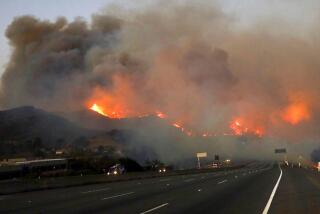East L.A. launches cityhood drive
More than three decades after the last attempt, East Los Angeles community organizers today are launching an official push for cityhood.
Hoping to boost their political clout, leaders from the largely Latino, unincorporated area have asked the county for financial data on the community, home to an estimated 143,000 residents.
“We feel, quite frankly, we have to have a seat at the negotiating table,” said Oscar Gonzales, president of the East Los Angeles Residents Assn.
Organizers hope that incorporating the community will amplify East Los Angeles’ voice to improve roads, fight gangs and provide more youth programs.
Supervisor Gloria Molina, who represents the area, has long fought for better services there; a county government building opened in East Los Angeles earlier this year. But incorporation advocates worry that they are easy to ignore among her 2 million constituents.
Molina’s chief of staff, Miguel Santana, said the supervisor would back whatever East L.A. residents ultimately decide.
Home to generations of activists, the seven-square-mile community is bordered by Montebello, Commerce, Monterey Park and Boyle Heights.
“Everybody recognizes the name East L.A.,” said state Senate Majority Leader Gloria Romero (D-Los Angeles), a vocal backer of East Los Angeles’ push for incorporation. “What Harlem signifies to the African American community, East L.A. signifies for the Mexican American, Latino community.”
After organizers analyze the region’s financial picture, they will submit the data to the county’s Local Agency Formation Commission. The group has commitments of about $25,000 so far to fund the financial study, Gonzales said. If the commission finds that the proposed city is financially viable, advocates can begin gathering signatures of 25% of 34,000 registered voters to put the cityhood question on the November 2008 ballot.
Political momentum, especially support from Romero and Rep. Grace F. Napolitano (D-Norwalk), and a less militant political climate make this push to create a city stronger than past efforts in 1974, 1963 and 1961, said Alberto Palacios, a member of the advocacy group and a government and economics teacher at Garfield High School.
Napolitano, whose district includes part of East Los Angeles, said, “I think it’s time.”
susannah.rosenblatt @latimes.com
More to Read
Sign up for Essential California
The most important California stories and recommendations in your inbox every morning.
You may occasionally receive promotional content from the Los Angeles Times.










